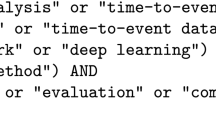Abstract
Objectives
To evaluate variation in smoking-related leukemia risk with time-since-exposure.
Methods
We analyzed data from a population-based case–control study conducted in Germany. Odds ratios were estimated by applying conditional logistic regression methods to 470 incident leukemia cases and 1,009 controls. Cases were classified as acute non-lymphocytic leukemia (ANLL), acute lymphocytic leukemia (ALL), chronic myeloid leukemia (CML), and chronic lymphocytic leukemia (CLL). Temporal variation in the impact of smoking on leukemia risk was assessed via exposure time-windows and a spline latency function.
Results
Current smokers were at greater risk of ANLL than those who never smoked (OR = 1.65 95% CI: 0.95, 2.87) and a positive trend was observed in ANLL risk with cumulative pack-decades smoked, under a 2-year exposure lag assumption (OR/pack-decade = 1.11 95% CI: 0.96, 1.30). This was primarily due to the association between ANLL and smoking in the period 2 to <10 years prior (OR/pack-decade = 2.72 95% CI: 0.93, 7.99). There was minimal evidence of association between ANLL risk and packs smoked 10 or more years prior. CML and ALL exhibited minimal evidence of association with smoking status. CLL exhibited a positive association with smoking in the periods 2 to <10 years and 10 to <20 years prior to diagnosis although estimates of association were highly imprecise.
Conclusions
The temporal pattern of smoking-induced ANLL risk appears to follow a prompt peak in excess incidence that diminishes with time since exposure.

Similar content being viewed by others
References
Kasim K, Levallois P, Abdous B, Auger P, Johnson KC (2005) Lifestyle factors and the risk of adult leukemia in Canada. Cancer Causes Control 16:489–500
Vineis P, Alavanja M, Buffler P et al (2004) Tobacco and cancer: recent epidemiological evidence. J Natl Cancer Inst 96:99–106
International Agency for Research on Cancer. Tobacco Smoke and Involuntary Smoking. IARC, Lyon, 2004
Stagnaro E, Ramazzotti V, Crosignani P et al (2001) Smoking and hematolymphopoietic malignancies. Cancer Causes Control 12:325–334
Thomas DC (1988) Models for exposure-time-response relationships with applications to cancer epidemiology. Annu Rev Public Health 9:451–482
Richardson DB, Wing S (1998) Methods for investigating age differences in the effects of prolonged exposures. Am J Ind Med 33:123–130
Dept. of Health and Human Services CfD, Control and Prevention NCfCDP, and Health Promotion OoSaH. The health consequences of smoking: a report of the Surgeon General. Atlanta, GA, 2004
Hauptmann M, Lubin JH, Rosenberg P, Wellmann J, Kreienbrock L (2000) The use of sliding time windows for the exploratory analysis of temporal effects of smoking histories on lung cancer risk. Stat Med 19:2185–2194
Hauptmann M, Wellmann J, Lubin JH, Rosenberg PS, Kreinenbrock L (2000) Analysis of exposure-time-response relationships using a spline weight function. Biometrics 56:1105–1108
Sorahan T, Kinlen LJ, Doll R (2005) Cancer risks in a historical UK cohort of benzene exposed workers. Occup Environ Med 62:231–236
Jöckel KH, Babitsch B, Bellach BM et al (1998) Empfehlungen der Arbeitsgruppe “Epidemiologische Methoden” in der Deutschen Arbeitsgemeinschaft Epidemiologie der Gesellschaft für Medizinische Informatik, Biometrie und Epidemiologie (GMDS) und der Deutschen Gesellschaft für Sozialmedizin und Prävention (DGSMP) zur Messung und Quantifizierung soziodemographischer Merkmale in epidemiologischen Studien. In: Ahrens W, Bellach BM, Jöckel KH (eds) Messung soziodemographischer Merkmale in der Epidemiologie. MMV Medizin-Verlag, München
Checkoway H, Pearce N, Hickey JL, Dement JM (1990) Latency analysis in occupational epidemiology. Arch Environ Health 45:95–100
Richardson D, Ashmore JP (2005) Investigating time patterns of variation in radiation-cancer associations. Occup Environ Med 62:1–5
Rothman KJ (1981) Induction and latent periods. Am J Epidemiol 114:253–259
Korte JE, Hertz-Picciotto I, Schulz MR, Ball LM, Duell EJ (2000) The contribution of benzene to smoking-induced leukemia. Environ Health Perspect 108:333–339
Rinsky RA, Hornung RW, Silver SR, Tseng CY (2002) Benzene exposure and hematopoietic mortality: a long-term epidemiologic risk assessment. Am J Ind Med 42:474–480
Silver SR, Rinsky R, Cooper SP, Hornung RW, Lai D (2002) Effect of follow-up time on risk estimates: a longitudinal examination of the relative risks of leukemia and multiple myeloma in a rubber hydrochlorine cohort. Am J Ind Med 42:481–489
Finkelstein MM (2000) Leukemia after exposure to benzene: temporal trends and implications for standards. Am J Ind Med 38:1–7
Pogoda JM, Preston-Martin S, Nichols PW, Ross RK (2002) Smoking and risk of acute myeloid leukemia: results from a Los Angeles County case-control study. Am J Epidemiol 155:546–553
Hoffmann W, Terschuren C, Schill W, Pohlabeln H, Greiser E. Northern Germany Leukemia and Lymphoma Study (NLL). Results Report: Abridged version, Commissioned by the Ministry of Environment, Nature Conservation and Agriculture of Scleswig-Holstein and the Ministry of Social Affairs, Women, Family Affairs and Health of Lower Saxony. Bremen: Bremen Institute for Preventive Research and Social Medicine, 2003
Savitz DA (2003) Interpreting epidemiologic evidence: strategies for study design and analysis. Oxford University Press, Oxford
Hoffmann W, Terschuren C, Holle R et al (2004) The problem of response in epidemiologic studies in Germany (Part II). Gesundheitwesen 66:482–491
Wells AJ, English PB, Posner SF, Wagenknecht LE, Perez-Stable EJ (1998) Misclassification rates for current smokers misclassified as nonsmokers. Am J Public Health 88:1503–1509
Patrick DL, Cheadle A, Thompson DC, Diehr P, Koepsell T, Kinne S (1994) The validity of self-reported smoking: a review and meta-analysis. Am J Public Health 84:1086–1093
Acknowledgments
David Richardson was supported by the Alfried-Krupp-von Bohlen und Halbach Foundation Fellowship Program “Life Sciences – Medizin, Lebens- und Gesundheitswissenschaften” at the Alfried-Krupp-Kolleg, Greifswald, Germany.
Author information
Authors and Affiliations
Corresponding author
Additional information
Institute in which the work was performed: Institute for Community Medicine, Section Health Care Epidemiology and Community Health, Ernst-Moritz-Arndt-University Greifswald, Greifswald, Germany.
Appendix
Appendix
Rights and permissions
About this article
Cite this article
Richardson, D.B., Terschüren, C., Pohlabeln, H. et al. Temporal patterns of association between cigarette smoking and leukemia risk. Cancer Causes Control 19, 43–50 (2008). https://doi.org/10.1007/s10552-007-9068-7
Received:
Accepted:
Published:
Issue Date:
DOI: https://doi.org/10.1007/s10552-007-9068-7




